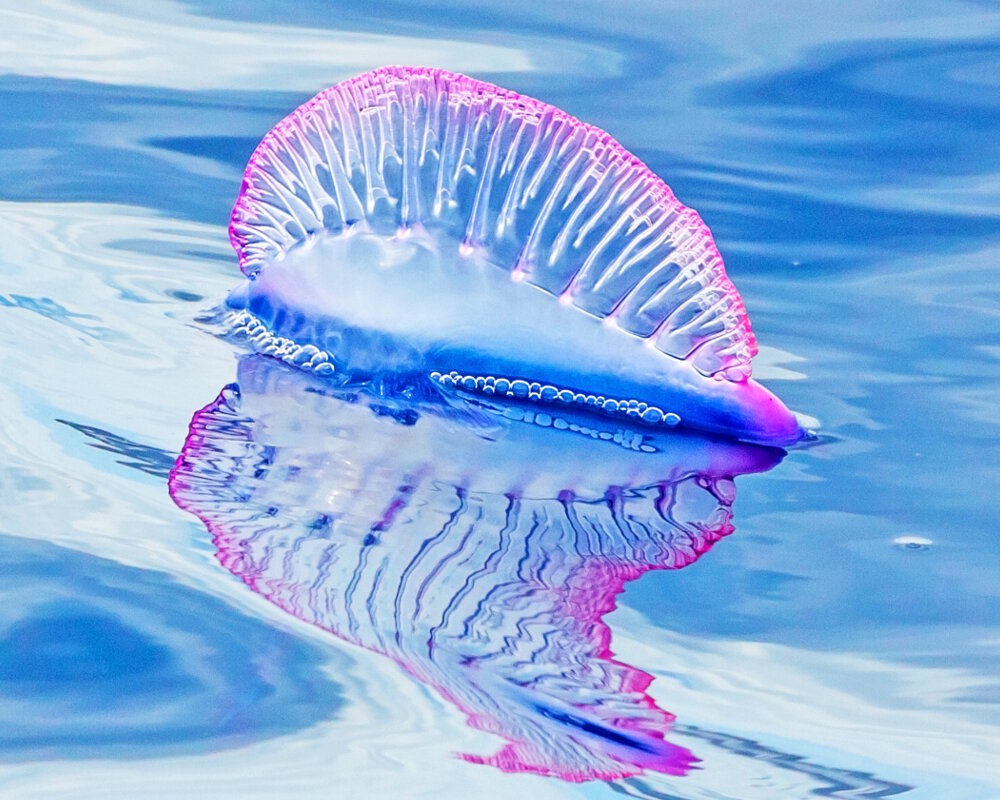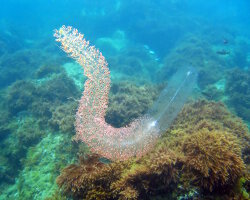Sealife guideThe hidden world of hydrozoans: tiny relatives of jellyfishThe marine cnidarians
Last updated on 09/08/2025 at 11:26 PM
Taxonomy
- Embranchement: Cnidarians
- Classe:
- Nom commun: Hydrozoans
- Nom scientifique: Hydrozoa
Description
Hydrozoans form a class within the cnidarians and include over 3,500 species. Hydrozoans belong to the cnidarian group, which also includes jellyfish, corals and sea anemones. Today, more than 3,500 hydrozoan species are recognized. Their name comes from the Greek hydro meaning water and zôon meaning animal.
Most hydrozoans are marine, but some species, such as hydras, live in freshwater. They are considered a transitional class between anthozoans (like corals and sea anemones) and scyphozoans, better known as jellyfish. Their life cycle is fascinating: they generally alternate between a fixed form, the polyp (the dominant stage) and a free-floating form, the medusa. However, some species express only one of these two stages.

Portuguese man o' war or physalia, also called sea bladder © Aldorado10 | Dreamstime.com
- the physalia, also called the Portuguese man o' war. Although it looks like a jellyfish, it is actually a colony of specialized individuals living together!
- fire coral, known for its bright colors and stinging cells
Geographic distribution
Hydrozoans are found in oceans worldwide, from warm tropical waters to the coldest polar regions. Most species live in coastal marine zones, often attached to rocks, algae, or other substrates, while some pelagic species drift freely with ocean currents.
Diet
Hydrozoans feed primarily on small planktonic organisms, such as zooplankton, crustacean larvae, or tiny fish. Polyps use their stinging tentacles, equipped with cnidocytes, to capture and immobilize prey before directing it to their mouths. Pelagic hydrozoans swim freely and catch their prey on the move using floating tentacles. Some species live in colonies, which allows them to share resources and optimize plankton capture.
These organisms, sometimes tiny and inconspicuous, play an important role in marine ecosystems, acting both as predators of small planktonic organisms and as prey for many fish, sea turtles and seabirds.
Discover Hydrozoans

Big siphonophore
(Forskalia edwardsii)
(Forskalia edwardsii)

Bladed fire coral
(Millepora complanata)
(Millepora complanata)

Many-ribbed jellyfish
(Aequorea forskalea)
(Aequorea forskalea)

Portuguese man of war
(Physalia physalis)
(Physalia physalis)




